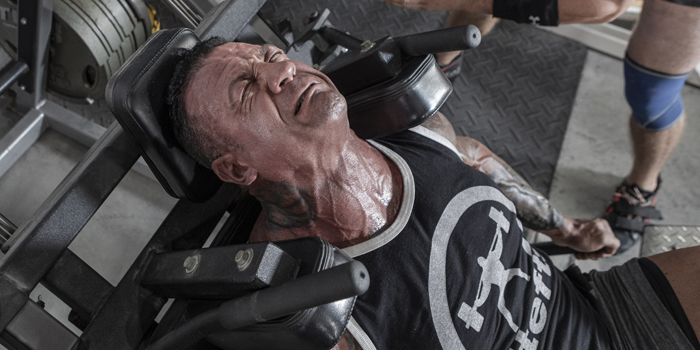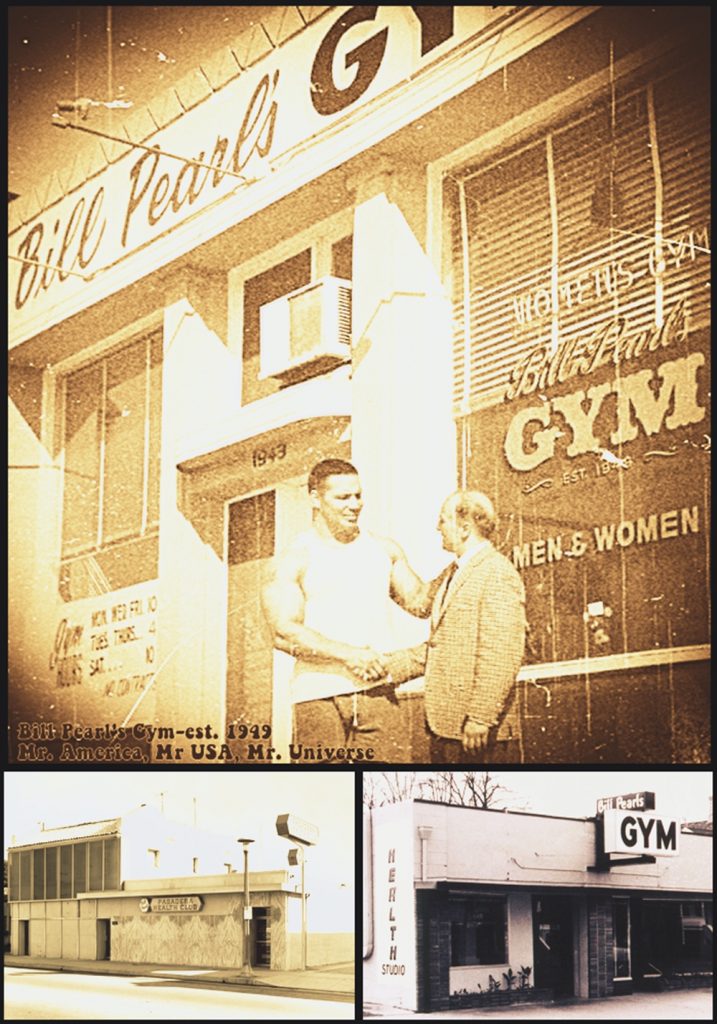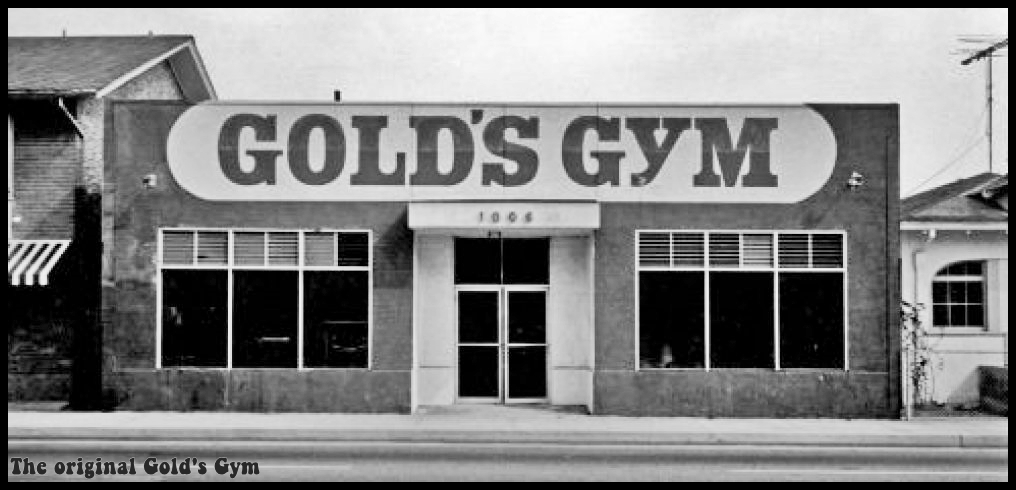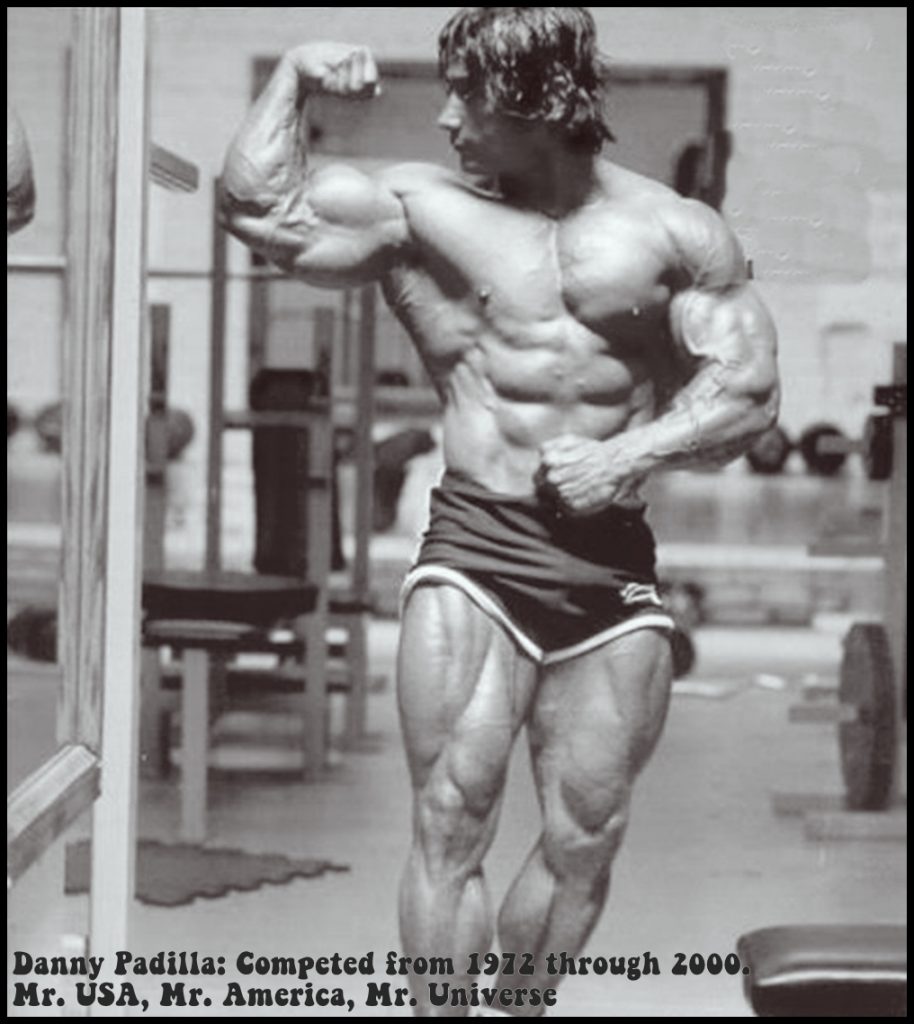
In the sweltering heat of August 1979, in a small town in Southern Illinois, Robinson's Gym was a tiny storefront gym. It was located just off one of four main street arteries branching from the town's tower square. There was Robinson's Gym, and in the opposite direction off of the same tower square was Drew's Gym. Both gyms were from the same vintage, pre-corporate gym era—when mom and pop gyms were sparsely sprinkled throughout small town America in tiny storefront locations.
Aside from some of the legendary trailblazers like Bill Pearl's and Gironda's single-building gyms, options for serious lifters were the mom-and-pop owned gym, the local YMCA, or one's garage or basement gym.
As Bally Total Fitness and their acquisition of the remnants of Nautilus, LaLanne, and Vic Tanny were still a few years down the road, lifters from that era would have looked at you like you had two heads if you said, "One day there will be 30,000 square-foot corporate owned gyms with ceiling-mounted television monitors, air-conditioning, 'lunk alarms,' and polo-shirt wearing, clipboard-carrying certified trainers."

The family-owned gyms from that era were owned by callous-handed, thickly muscled lovers of iron and steel. The gym owners unlocked their gym in the wee hours of the morning for their early-rising members and then went off to work their 9-to-5 job. After the day's work concluded, the gym owners returned to their gym in the evening, trained with like-minded individuals, and hit the weights with passion and conviction.
Robinson's Gym
Unlike other store-front gyms from the late 1970s and early 80s, Robinson's Gym was a family-owned gym that provided a place for the Robinson brothers (both amateur bodybuilders) to train and for others cut from that same cloth.
In the summertime at Robinson's Gym, the glass front door was propped open by an old, heavy pedestal fan to bring any air movement into the front room. Hot summer air blew from this industrial-sized fan set on low, the only speed that worked, onto a tattered and sweat-soaked Robinson's t-shirt. It was as reviving and energy restoring as taking the "Nestea Plunge." Google it.
The gym was a small storefront consisting of a series of open rooms that, if viewed from an aerial view, would appear somewhat like a maze.
Each of the carpeted rooms in this simple but utilitarian gym was home to a sparse couple of pieces of equipment from the prior era, the late 1960s and mid-1970s. Additionally, each room had a mirror or two on the walls, some weights on a weight tree, and barbells propped up against the drywalled corners of each room. No expensive barbell storage was needed. The corners sufficed, and the cratered drywall from the bars told a story.
For the most part, the gym had only a few people lifting in it at a time. In hindsight, it was probably 2000 square feet in total with 9-foot ceilings that made the rooms feel smaller in contrast to the sheer size of the weight equipment.
Robinson's Gym had a small single-occupancy restroom, and a water fountain was directly outside the restroom. That water fountain during the summer was a Godsend—an oasis where the water was ice cold and the stream had enough velocity and height to dip your face into as you quenched your thirst and restored your life energy.
RECENT: Beyond Mountains, There are Mountains
In the very back room of the gym, where the military press bench sat, was a small wall-unit air conditioner. While the heat just hung in each of the other rooms, the back room was a sanctuary, a retreat, a shelter from the heat during the hot summer months in southern Illinois.
That summer at Robinson's Gym and my time training at Drew's Gym helped shape and form my frame of reference of what a gym can be with regard to an atmosphere conducive to great training sessions. If one's memories could somehow be rewound and rewatched like episodes of a Netflix series, I would relish rewatching this summer's training episodes over and again. All gyms have weights, but very few gyms have an atmosphere, an energy, or a gravitas to them.
I reflect on Robinson's Gym every time I watch the movie Pumping Iron and that scene with Lou and Matty Ferrigno at R&J's Gym in Brooklyn. They were examples of the storefront gyms of that era.
I paint this picture of my memories of this gym for the younger lifters that might never have the opportunity to train anywhere but a 30,000-square-foot fitness center. A fitness center with the air conditioner set on 68 degrees and where 100-pound chrome dumbbells show no sign of use. Where a collection of individuals are working out at the same time, but aren't interacting together. Where all the soul, texture, grit, and heart have been sanitized away for the benefit of the 30 cardio crowd and to the detriment of the serious lifter. Where training has been dumbed down to merely exercising or worse, where members waste away their precious gym time texting, posting, and holding a smartphone instead of gripping a dumbbell. For the most part, those younger lifters will be robbed of the opportunity to have trained in one of these Mesozoic-esque era fortresses of solitude. A place where effort, consistency, and desire symbiotically collided and produced strength, power, and muscle.
As a young person all those decades ago finding my way in the world of weights, these lifter-owned gyms would pop up on one side of town as another lifter-owned gym would close on the other. The outgoing owner sold all of their equipment to the incoming owner. I recall seeing the same dumbbell set move to three different gyms in three different buildings in my hometown in about a six-year span. This is the circle of life for barbells, dumbbells, and the mom-and-pop gyms of the 70s and 80s.
Why?
For the most part, gyms don't make their owners money. Gyms make their owner's dreams come true.
The original Gold's Gym of Arnold and Franco fame was established in 1965 and sold three times before 1972 as it continued to lose money. Ultimately, mom-and-pop gyms are about the love of muscle, strength, power, and weights, regardless if they stay open for six months, a year, a decade, or in rare cases like Gironda or Frantz Gym, for virtually a lifetime.

As for the lifters who are gym owners; a life with weights, training in their own gym with others cut from that same cloth, providing a place for the like-minded to grow strong(er) and more powerful, well, that is the only way they would ever want to live their life. For the gyms I trained at in my youth, be it Robinson's Gym, Drew's Gym, Pumping Iron Gym, Bobby V's Gym, Mark's Gym, Heavy Metal Gym, or Frantz Gym, that was the case for all seven of those gym owners.
This Guy
One particularly hot summer, I recall both sipping and cooling my face in the cold water from the fountain while watching one bodybuilder work out. The regular handful of guys training there shared the same training time as me at the gym, but then there was this guy. He was just different. His physique looked different. He trained differently. How he moved the weight was different, his focus was different; everything about him was different, unique, better. The only thing I or the other handful of lifters who were striving for muscle and strength had in common with him was we were all meeting at the same place at the same time on the same days. He seemed like he was from another planet, a planet where the gravity was turned all the way up, and all its inhabitants were strong, powerful, and muscular as everything on his planet was heavy, and everything required immense strength and power to move.
A thought occurred to me as I stood by the fountain pretending to be thirstier than I was so I could watch this guy train. I couldn't help but think that "he must know something that I don't know when it comes to lifting," as his physique was heavily muscled. Picture Danny Padilla and the way he went about the business of lifting. It was just that, business-like. Not that other lifters were lollygagging around, but he was just honed in, purposeful, deliberate, and seemed more inside his head. For his amount of muscle, much smaller men were lifting much greater weight. That also had me scratching my head as I was a young person trying to make muscle. This guy had enough muscle for five of me yet was using far less weight than other much smaller men but lifting it in a manner that told me if he wanted to, he could lift a great deal more.

Where some lifters were slinging weights around, he was precise and exacting in his movements. Where some would do a set and then sit and read from the piles of muscle magazines of that era that were lying around the gym, he would complete a set and then sit down and write notes about that set in his log book. It seemed like he wrote down everything in that book. He would close his eyes and breathe when others would yell and scream or shake the weights. He appeared to mentally "will" the weights to move.
As I stood and watched, he put several 45-pound plates on the chain of the dip belt and climbed his 5'6," 200-pound, 10% body fat physique onto the dip machine. From there, he performed 15-20 slow, purposeful and seemingly effortless dips. He repeated this for a number of sets until I had to move on as other overheated lifters were approaching the ever-in-demand drinking fountain.
One evening that summer, I found myself sitting outside on the sidewalk. My back leaned against the gym wall as I waited for my ride home. Sitting about ten feet away, writing in his book with his back resting against the gym's outside wall, was that guy—that alien from the heavy gravity planet.
He sat on the sidewalk writing copious notes in his book, a thick-weathered black book that looked like an old diary or something Indiana Jones would scrawl in. I kept watching, and he kept writing. I had seen him outside of Robinson's Gym because he also trained at Drew's Gym down the road on the opposite side of the tower square. I recognized him from both places. He had zero idea I even existed.
"What are you doing?"
Without looking up and still focused on his writing, he explained, "I am writing about my training session."
"Why?"
Again, without looking up, he quickly replied, "I can't plan where I'm going unless I know exactly where I've been."
He then took the worn, frayed towel resting on his neck and shoulders and folded it, rolled up his lifting belt, closed his book onto his pen, and put all three neatly and meticulously into his worn but clean gym bag. I watched him walk away from the gym. His massive hamstrings burst out of his cut-off sweatpants. His forearms looked solid as granite with protruding veins thick as if Earthworms were glued to them.
As a kid lifting in a gym with primarily grown men, you do very little talking and quite a bit of listening, observing, watching, studying and analyzing of all that is happening around you. It is quite amazing what one can learn when the mouth is closed, and the ears are open.
In listening, I learned that this lifter was a mailman working for the US postal service. I also learned he was a competitive bodybuilder in training for the Mr. America title. In observing, I noticed that it was within the nuances, the almost imperceptible nuances, that made all the difference.
I recall one of my professors in graduate school talking about the power of observation. That what seems so simple, watching and learning, is a practice in patience and a skill that can help you unlock many of life's secrets. The world can be a place where we become trapped in the cycle of routine, where there is so much visual stimulus that we often miss things.
You can, for example, look at a field of flowers, or you can focus on one single specific individual flower. If you look closely enough, you can see the pedals, peduncle, stamen, sepal, and pistil, and suddenly beyond the simple beauty of the field as a whole, you find amazing complexity, the nuance, the detail, even the systems that comprise this quite complex structure. Observation is all about the nuance, the subtle, and the tiniest variances.
The Power of Observation
The skill of observation has never been more important than it is today. There's so much available information and little regulation. There is an inordinate amount of bad information, especially in the world of strength, power, and muscle. When money is pumped into something, "everybody under the sun becomes an expert." Where else can you find folks who train others for a living but have never set foot on a powerlifting platform, a strongman field of competition, or a bodybuilding stage?
I reflect on the sweltering heat of that August heat at Robinson's Gym. Observation, in many ways, was your Google. Take two lifters, both following methods from the same book. Both perform the same sets for an exercise; both use the prescribed amount of reps per set, and both follow the same three exercises of four sets per exercise to arrive at the prescribed volume. Yet, within those similarities and prescribed templates, a world of observable nuance illuminates a universe of differences between those two lifters.
The power of observation is a master course in the subtlety of training. It is often the smallest cogs, the most precision gears that make the machinery run smoothly. In watching many of the lifters of Robinson's Gym, you could see and hear the similarities through their conversations about nutrition, food supplements, training routines, sets and reps, and volume.
Through authentic observation, you really could see how one lifter would bring his physique to life. The cadence to his reps was different, how he stayed within his technique was different, how he stayed focused for each rep was different, and how with some motions, how he squeezed his muscle at the end of the movement was different.
If you were to compare his log book with another, the numbers would look virtually identical. Still, as you watched those two lifters doing the same exercises, program, sets, and reps, they could not be more different. What was written on the page was one thing; the observable and remarkable difference was how it was performed or not performed.
Conclusion
To this day, I tell young lifters that your power of observation can not only help you learn what to do, but it can also help you learn what not to do. As a young person lifting during an era pre-internet, some of my most valuable lessons came from observing others. Observing others provided a menu of so many things to absolutely never do.
The road to strength, power, and muscle is not always perfectly lined and paved. On the contrary, the road to strength, power, and muscle is also a road strewn with potholes to avoid perilous stops along the way that should be avoided at all costs.
My suggestion has always been this; before you take as gospel something you hear or read from those 'experts' selling something, hit the pause button and invest some real observational time before spending your money on those who talk a good game but have no actual experience to back up their claims.
There are no, have never been any, and will never be any secret methods for success in the weight game. So heed these words and be cautious about those who teach but have never done. Avoid those with merely a handful or perhaps no competitions under their weight belt, yet espouse as if they have accessed all the answers to the universe's questions. Snake oil salesmen and women have always been and will always be. As the quote often attributed to P.T. Barnum goes, "There is a sucker born every minute." Utilize that intrinsic tool of observation and let someone else be that sucker.
Watching that bodybuilder so many years ago, I learned about subtleness within the barbarity of the weight game. I learned this as I observed the ten other guys doing the same basic routine but without the key ingredients that made the difference. Ingredients like how he engaged with the weights, his consistency, his diligence, the amazing work ethic he brought to every workout, and his extensive note-taking (along with his ability to shut out all the distractions like heat, periodic static on the old radio, or others). These collective yet non-measurable things were his "secret."
That summer, I would watch smaller non-competitive lifters sling much larger weights than this man aspiring to win the Mr. American title. They would sling the weight, yet he would "feel the weight." I observed them sacrificing the nuanced tactile aspects of the lift upon the altar of momentum. I watched other lifters spend far more time in the gym than he did. Ultimately, the duration of time in the gym didn't matter. I observed that what mattered more was what happened between the start of the workout and the last plate being placed back on the weight tree. Some would do a set, thumb through a magazine, do a set, and thumb some more through the magazine. Sound familiar? Just swap out the word magazine for the word cellphone as some things never change. Bottom line, his focus, and vigilance persevered the entire duration of the workout, undeterred by distraction.
Ultimately, as Mr. America, Mr. Universe, Mr. World, and bodybuilding's golden era philosophical north star Dave Draper would say, "There are no secrets."
There are no secrets.
Dave draper
Suppose you are a new lifter, perhaps a young person in high school or just starting your lifting career, or a seasoned lifter looking to improve. In that case, I suggest veering from the noise of social media salespeople and internet gurus selling the latest and the greatest. Instead, spend some time observing lifters at your very own gym. Those observations will tell you all you need to know about their training without them ever having to whisper a word to you.
Observe those lifters that continue to get strong(er), bigger, and more powerful and remain healthy and relatively injury-free. Observe how they lift, then observe those lifters who look the same today as yesterday, as last year, and the years before. Observe lifters who run 100mph into the same wall repeatedly and think "hardcore" means compromising one's health and future lifting endeavors as they throw caution to the wind. Those lifters are a dime a dozen, here today, gone later that same day. They are living representatives of the potholes to avoid on the road to success. Use them as the observable template of what not to do.
Observation is a master teacher as sometimes a set is more than a set, and sometimes a rep is more than a rep.
Wishing you the very best in your training journey. Ever Onward.

Eric Maroscher is the owner of the Monster Garage Gym. Cofounded by Phil Daniels, NFL Defensive End, Monster Garage Gym is a premier powerlifting gym in the United States. Eric is the leader of the Maroscher Powerlifting Team, a two-time WPC World Powerlifting Champion, two-time APF National Powerlifting Champion, WPC North American Powerlifting Champion, and a multi-time APF Illinois State Champion.










2 Comments